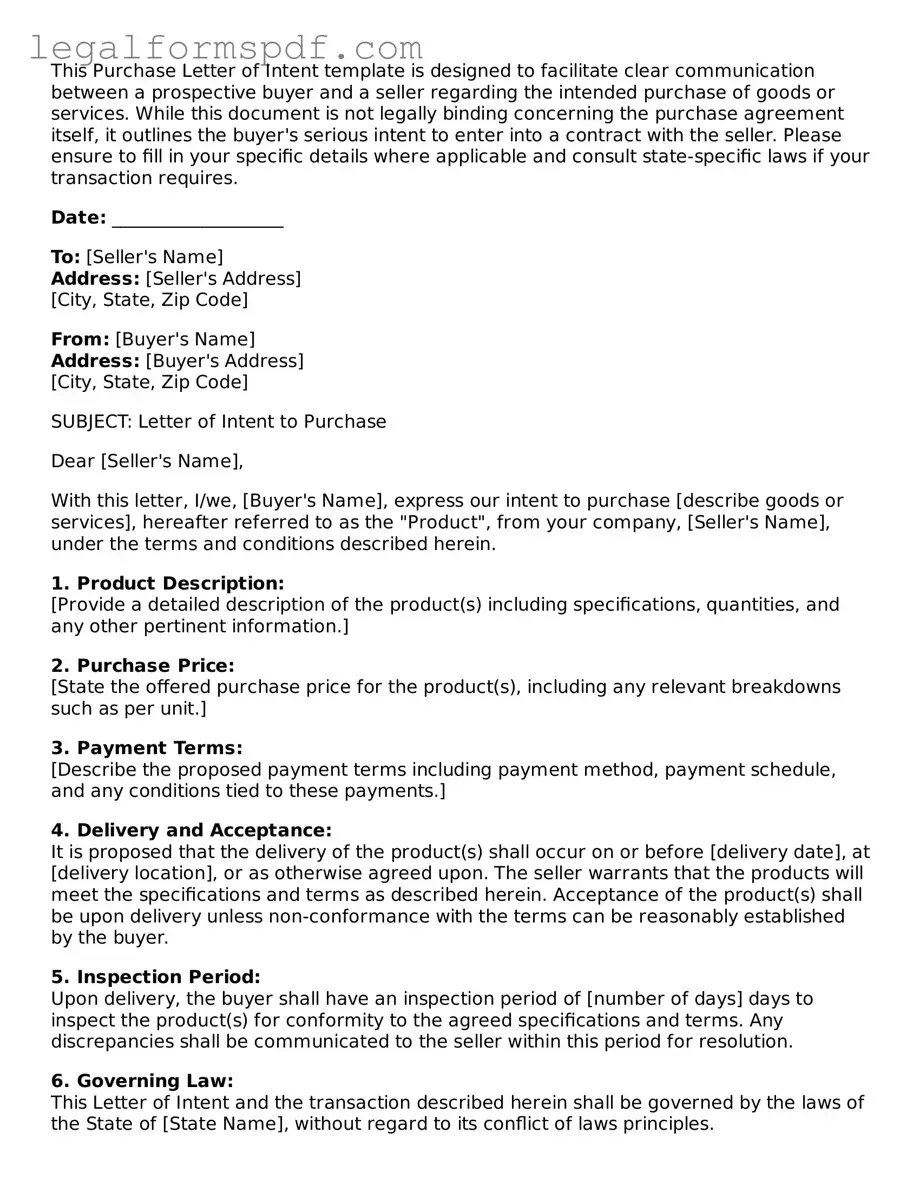What is a Purchase Letter of Intent?
A Purchase Letter of Intent (LOI) is a formal document that outlines the initial intentions of a buyer to purchase goods, services, or property from a seller. It details the preliminary terms and conditions under which the purchase would be made, serving as a foundational agreement before a detailed contract is drawn up. Though not always legally binding in terms of the purchase itself, it indicates a serious commitment and can include binding provisions, such as confidentiality agreements.
When should I use a Purchase Letter of Intent?
A Purchase Letter of Intent should be used when you intend to buy goods, services, or property and want to outline the terms of the purchase in writing, but are not yet ready or able to commit to a binding contract. It is particularly useful during the negotiation phase, as it helps both parties to confirm their understanding and agreement on key terms before drafting a final, binding agreement.
Is a Purchase Letter of Intent legally binding?
Generally, a Purchase Letter of Intent itself is not legally binding in terms of the agreement to purchase, meaning either party can usually walk away from the deal. However, it can contain binding clauses, such as non-disclosure agreements or a promise not to negotiate with other parties for a specified period. It is crucial to clearly specify which parts of the LOI, if any, are intended to be legally binding.
What are the key components of a Purchase Letter of Intent?
A Purchase Letter of Intent typically includes: the names and contact information of the buyer and seller, description of the goods, services, or property being purchased, purchase price or method for determining the price, payment terms, timelines for inspection and final purchase, any contingencies that must be met before the deal can be finalized, and any provisions that will be binding.
How does a Purchase Letter of Intent differ from a Purchase Agreement?
While a Purchase Letter of Intent outlines the intent and preliminary terms for a transaction, it does not finalize the sale. A Purchase Agreement, on the other hand, is a legally binding contract that details the specific terms and conditions of the sale, including obligations, representations, and warranties of both the buyer and seller. The Purchase Agreement is used to execute the transaction after the preliminary terms have been agreed upon in the LOI.
Can I withdraw from a Purchase Letter of Intent?
Yes, in most cases you can withdraw from a Purchase Letter of Intent without legal consequence regarding the agreement to purchase, as it is usually not a binding commitment to the transaction itself. However, if the LOI contains any binding provisions, those must be honored. It's important to review the document carefully and understand your obligations before deciding to withdraw.
What happens after a Purchase Letter of Intent is signed?
After a Purchase Letter of Intent is signed, the next steps typically involve due diligence by both parties, negotiations to finalize the terms of the purchase, and the drafting of a binding Purchase Agreement based on the terms outlined in the LOI. During this phase, further details are clarified, and any contingencies mentioned in the LOI are addressed. The transaction proceeds towards closing if both parties agree to the final terms and sign the Purchase Agreement.
Does a Purchase Letter of Intent need to be notarized?
Usually, a Purchase Letter of Intent does not need to be notarized. It serves as a preliminary agreement and, as such, notarization is not typically required. However, incorporating a notary might add a level of seriousness and formality to the document, and some parties might choose to do so for added legal protection or documentation purposes.
How long is a Purchase Letter of Intent valid?
The validity period of a Purchase Letter of Intent should be specified within the document itself. If no duration is mentioned, it remains effective until either party withdraws or a Purchase Agreement is signed. To avoid misunderstandings, it's advisable to include an expiration date or a specified period during which negotiations must be concluded.
Can the terms of a Purchase Letter of Intent be changed?
Yes, the terms of a Purchase Letter of Intent can be changed if both parties agree to the amendments. Since the LOI is generally not legally binding regarding the transaction's terms, adjustments can be made to reflect any new understanding or agreements reached during negotiations. However, any binding provisions within the LOI should be carefully considered before making changes.
